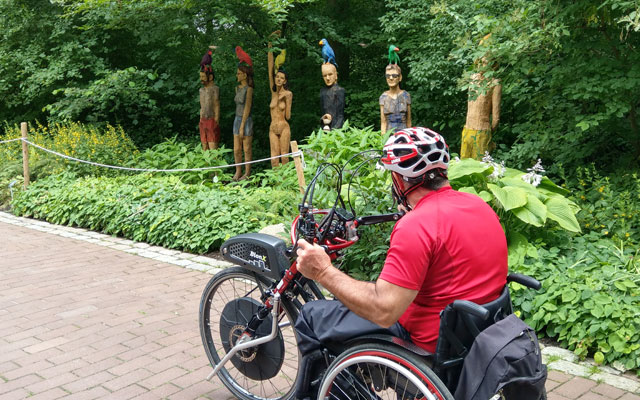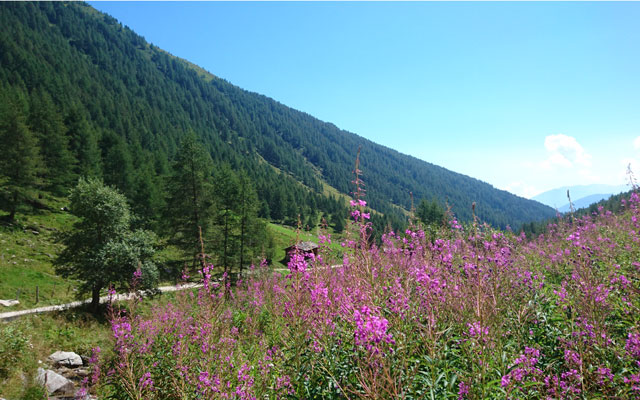The Münsterland
Culture, nature and history - a brief summary
Münsterland is a region in north-western Westphalia and belongs to the federal state - tatataaa - North Rhine-Westphalia. The centre of Münsterland is, how could it be otherwise, the beautiful bicycle city of Münster. In the north, Münsterland borders Lower Saxony, in the northeast lies the Teutoburg Forest, in the south the course of the river Lippe forms a natural border and in the (north) west Münsterland borders the Netherlands.

By loading the map, you accept Google's privacy policy.
Learn more
The regions
A matter of dispute
As the Münsterland is very extensive, it is divided into five regions. The so-called Kernmünsterland is the region around Münster, with parts of the districts of Warendorf, Coesfeld and Steinfurt, and lies between the rivers Ems and Lippe. This region is relatively hilly and is home to the Baumberge mountains, which are up to 189 metres high, and the Beckumer Berge mountains, which are up to 173 metres high.
Another region of the Münsterland is the Westmünsterland, which lies on the border with the Netherlands. This includes the district of Borken and parts of the districts of Coesfeld and Steinfurt. In the southeast of Westmünsterland, the Halterner Berge near Haltern am See in the Haard (up to 154 metres) extend beyond the Lippe river. The Hohe Mark and Borkenberge mountain ranges are also located here.
The Nordmünsterland is home to parts of the districts of Warendorf and Steinfuhrt and consists of a largely flat sandy landscape.
The Tecklenburger Land is the northernmost tip of Westphalia, which includes parts of the district of Steinfurt. It must be said, however, that although Tecklenburger Land still belongs to Münsterland in the broadest sense, it has its own regional identity. The area around Gütersloh, also known as East Westphalia, has a similar identity.
Münsterland = Land of rivers
Rivers everywhere, no matter in which direction you go
In addition to the interesting hilly landscape, which one would not have expected at first, it is also surprising that the Münsterland is criss-crossed by many rivers. The upper course of the Ems, for example, flows through the north-east and north of Münsterland. A large part of the eastern half of the Münsterland also falls into its catchment area, with the Werse as the most important tributary playing a major role. The Lippe drains the southwest and extreme south towards the Rhine. Finally, in the west and northwest are the headwaters of the Issel, Bocholter Aa, Schlinge, Berkel and Vechte. Waterways can also be found in the Münsterland, for example the Dortmund-Ems Canal and the Mittelland Canal.
If you take your handbike for a leisurely ride through the Münsterland, either along the great river cycle paths or over the hilly landscape in the core or west Münsterland, you can't help but notice that the landscape is characterised by intensive agricultural use, which is relatively small-scale. Fields, meadows, pastures, small woods and hedgerows create a varied picture, which is why it is called the "Münsterland park landscape".
City of Münster
Big city flair in Münsterland
The centrally located Münster, with a population of around 315,000, is the only large city and the centre of the Münsterland region. It is followed by Rheine, Bocholt, Ibbenbüren and Ahlen with populations between 50,000 and 100,000. They owe their earlier growth and current size to industrialisation, especially the textile industry. Also significant are the present-day district towns of Borken, Coesfeld, Steinfurt and Warendorf, the towns of Dülmen and Gronau, and the former district towns of Ahaus, Beckum and Lüdinghausen.
Handbike routes without end
The cycle routes through Münsterland
Due to the Hochstift Münster and the various counties and principalities that existed in the Münsterland, there are many castles and palaces here, whereby the water castles in particular are typical of the comparatively flat landscape. All the important castles, palaces and former noble residences can be explored by bicycle on the so-called 100 Castles Route. There are also numerous well-signposted cycling routes to discover.
After this short insight into the history and culture of the Münsterland, we will ride together on the handbike through this beautiful landscape. First we will take you on a tour from Beckum in the core Münsterland along the river Werse to Maximilianpark in Hamm.
Strap on the preload wheel, transfer to the handbike or however you prefer to travel - here we go!
Next time
By handbike along the Werse from Beckum to Hamm
So check back or better - subscribe to Wheelchair Tours on the social media channels!


